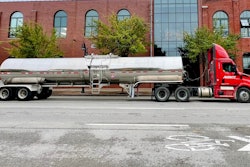Making drivers pay
Driver P&Ls, realistic hiring standards mean tighter operation
Next to the quality of freight, the quality of your drivers may be the most important factor in your company’s profitability, says David Goodson, management consultant with KPMG LLC.
Yet, few trucking companies truly measure and monitor either to the degree that they track equipment, Goodson told Symposium attendees.
Goodson recommended that carriers create profit-and-loss statements not just for the entire company or its business units but also for individual drivers. Such statements will help identify your key performers – those you want to work hardest to keep happy and driving for you, he said. At the same time, of course, you identify those who need more attention. Less obvious but also important, he believes, are the benefits for assessing recruitment and retention. By linking driver P&Ls to the recruits who hired those drivers, you can determine who hires the most profitable drivers. Also, you can gauge the real impact of turnover on your company. If the drivers you are losing are among your worst performers, perhaps turnover isn’t such a bad thing.
Goodson suggests using drivers’ actual numbers for “big items,” such as revenue, wages/settlement, miles, miles out of route and fuel economy. For items that are small or difficult to allocate – tires, fixed tractor and trailer costs or office overhead, for example – carriers should assign a standard cost to all drivers.
Leon Balentine, president of Florence, Ala.-based USA Motor Express, produces driver P&L statements and tracks other driver performance data. “Technology is the key,” Balentine told Symposium attendees. USA Motor Express uses mobile communications to capture and report driver-related data from each tractor and its engine control module. Managers export the data from the carrier’s enterprise system to an Excel spreadsheet to generate the driver P&L reports. (For more on driver P&Ls, see Goodson’s Operations column, “Bottom-lining your drivers,” in the March 2002 issue of CCJ.)
Lowering recruiting costs
Developing a cost-effective driver force starts during recruiting, Kelly Anderson, president of Impact Transportation Solutions, told the Symposium. Carriers should track the effectiveness of driver recruiters by tracking total recruiting costs per call and per hire and by seeking continual improvement. “You’re throwing money away if you’re not doing it,” he said.
From a profitability standpoint, Anderson said it’s crucial to set a realistic hiring standard. You want a standard that will keep accidents and cargo claims in line and improve service records but not one that’s so high that it will drive up recruiting costs and leave you with empty trucks for extended periods, he argued.
Anderson recommended: (1) two years’ OTR experience within the past five years and no more than one moving violation within the past 12 months; (2) two moving violations within the past 3 years; (3) one chargeable accident within the last 12 months; and (4) two chargeable accidents within 3 years. Any standard more stringent than that, he said, might close the door too early on potentially very good drivers.










